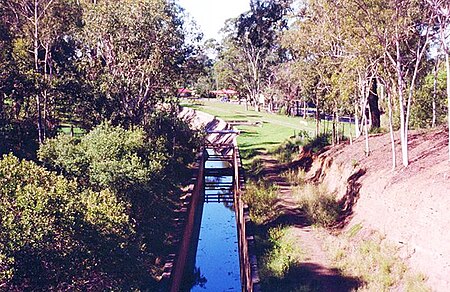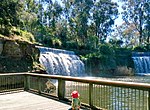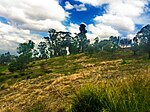Lower Prospect Canal Reserve

The Lower Prospect Canal Reserve is a heritage-listed former farm and public water supply canal and now bushy corridor and nature reserve stretching 7.7 kilometres (4.8 mi) through the heart of suburban Sydney, New South Wales, Australia. The lineal corridor stretches from Prospect Reservoir to Sydney Water Pipehead at Albert Street, Guildford with the majority of the reserve located in Greystanes, which is a suburb within the Cumberland Council area.The Canal Reserve is one of the last remaining remnants of natural Cumberland Plain Woodland in the Sydney basin and contains a number of rare and endangered plant specimens. The land corridor occupied by the canal is recognised by the local government and documented for conservation and protection measures. Formerly a public water supply for western Sydney, the Lower Prospect Canal was eventually unneeded in May 1995 when Sydney Water authorized an underground pipeline for $54m.The whole scheme relied on gravity and therefore demanded unerring accuracy during construction. The Lower Prospect Canal falls approximately 77 centimetres (30 in) over its 7.7 kilometre length. The scheme, including the Lower Prospect Canal, was designed by Edward Orpen Moriarty and built from 1880 to 1888 by the NSW Board of Water Supply and Sewerage; Kinchela and Metcalfe. It is also known as Lower Canal, Boothtown Aqueduct, Inverted Syphon, Aqueduct Valve House No 1 & 2 and Culvert, Covered Way, Smithfield Tanks and Sedimentation Channel. The property is Crown land and is administered by the Department of Industry, Skills and Regional Infrastructure Development, a department of the Government of New South Wales. It was added to the New South Wales State Heritage Register on 30 June 2015.
Excerpt from the Wikipedia article Lower Prospect Canal Reserve (License: CC BY-SA 3.0, Authors, Images).Lower Prospect Canal Reserve
Prospect Canal Shared Path, Sydney Greystanes
Geographical coordinates (GPS) Address Nearby Places Show on map
Geographical coordinates (GPS)
| Latitude | Longitude |
|---|---|
| N -33.8319 ° | E 150.9459 ° |
Address
Prospect Canal Shared Path
Prospect Canal Shared Path
2145 Sydney, Greystanes
New South Wales, Australia
Open on Google Maps





